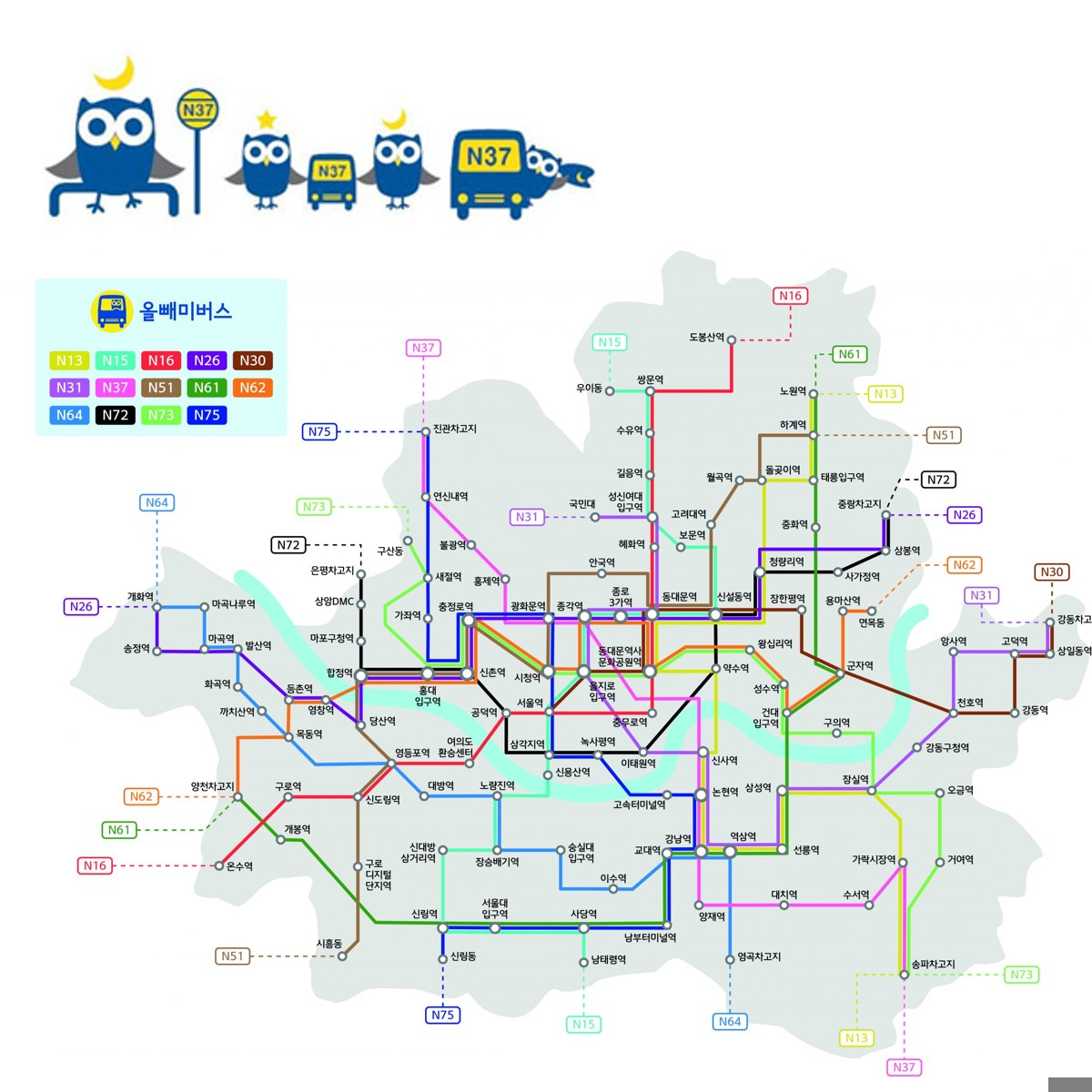Seoul wouldn’t be famous for its lively nightlife scene if getting back home after a night out were a major challenge.
Recognizing the need of a public that is socially active at night, South Korea’s public transport operates at least until around midnight, although one is strongly advised to check on the last vehicle reaching the desired destination from the point of departure.
Most major metropolitan areas have buses that operate well after midnight, but Seoul even has regularly dispatched intracity bus lines operating before the break of dawn. Nicknamed the "owl bus," 100 such buses operate across 14 routes covering most of the city.
The website for the Bus Information Service, so far only available in Korean, provides information on Seoul's bus system, including all routes, location tracking for each bus and the fastest route using public transportation.

More information about Seoul's transportation system in English can be found at https://english.seoul.go.kr/service/movement/public-transportation, operated by the Seoul Metropolitan Government.
Nighttime buses cost about 1,000 won (75 cents) more than regular ones -- fares for adults are 2,150 won by transit card or 2,250 won by cash -- but are still much less than taxis, which charge extra between 10 p.m. and 4 a.m. the next day.

Subways are another cheap and convenient way to travel at night. But beware, the last train is often frequented by a significant number of passengers who may be intoxicated.
On the occasion of big outdoor events where many people are expected to be out late at night, Seoul authorities often operate extended hours to help them get back home.
One such event was for street cheering in Gwanghwamun, central Seoul, for Korea’s final knockout match against Brazil in the 2022 Qatar World Cup in December last year, which started at 4 a.m.
Metro networks across the country
Aside from Seoul, there are four other metropolitan areas with a passenger railway system. Together, the five cover roughly 60 percent of the country's 51.4 million population.
Seoul Metropolitan Subway system is by far the largest of the rapid transit networks in the country, followed by the metro system interconnecting Busan, Ulsan, Yangsan, South Gyeongsang Province, and surrounding areas. The cities of Daegu, Daejeon and Gwangju have their own subway network, although they are not nearly as expansive as those in larger cities; Daegu has just three lines, while the other two each have one.
There are plans in the works to expand the aforementioned metro systems to neighboring areas, such as establishing a metro system that would connect Daejeon to other areas in North Chungcheong Province and to the city of Sejong, the home of the Government Complex Sejong. But there are still several rural towns in the country that lack any form of public transportation.
According to Statistics Korea, there were 2,224 towns across the country that were more than a 15-minute walk from the nearest public transport in 2020, accounting for 5.9 percent of all rural towns.
Survive & Thrive is a series offering a guide to living in South Korea for those born outside of the country. – Ed.



















![[Today’s K-pop] Treasure to publish magazine for debut anniversary](http://res.heraldm.com/phpwas/restmb_idxmake.php?idx=642&simg=/content/image/2024/07/26/20240726050551_0.jpg&u=)